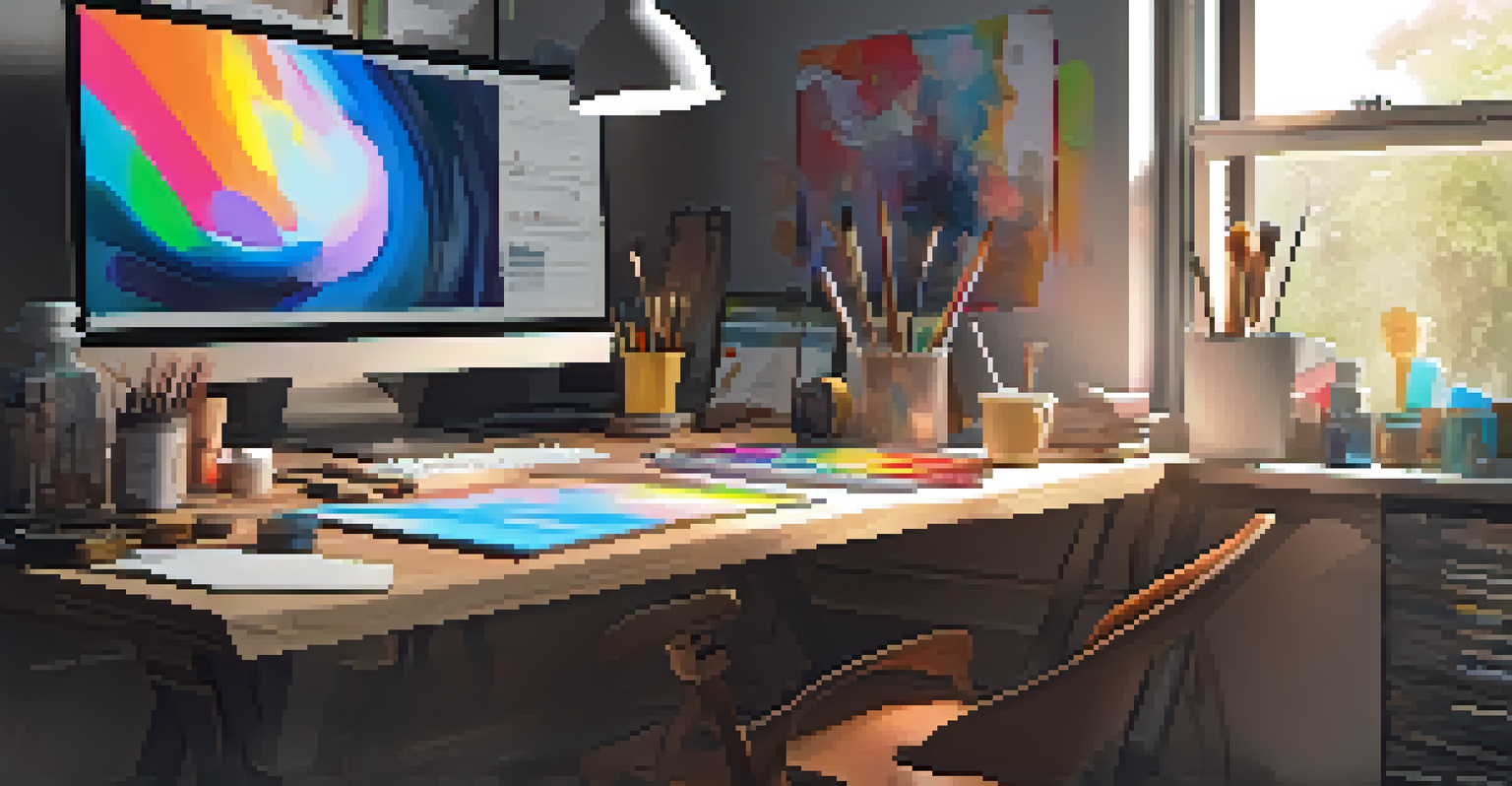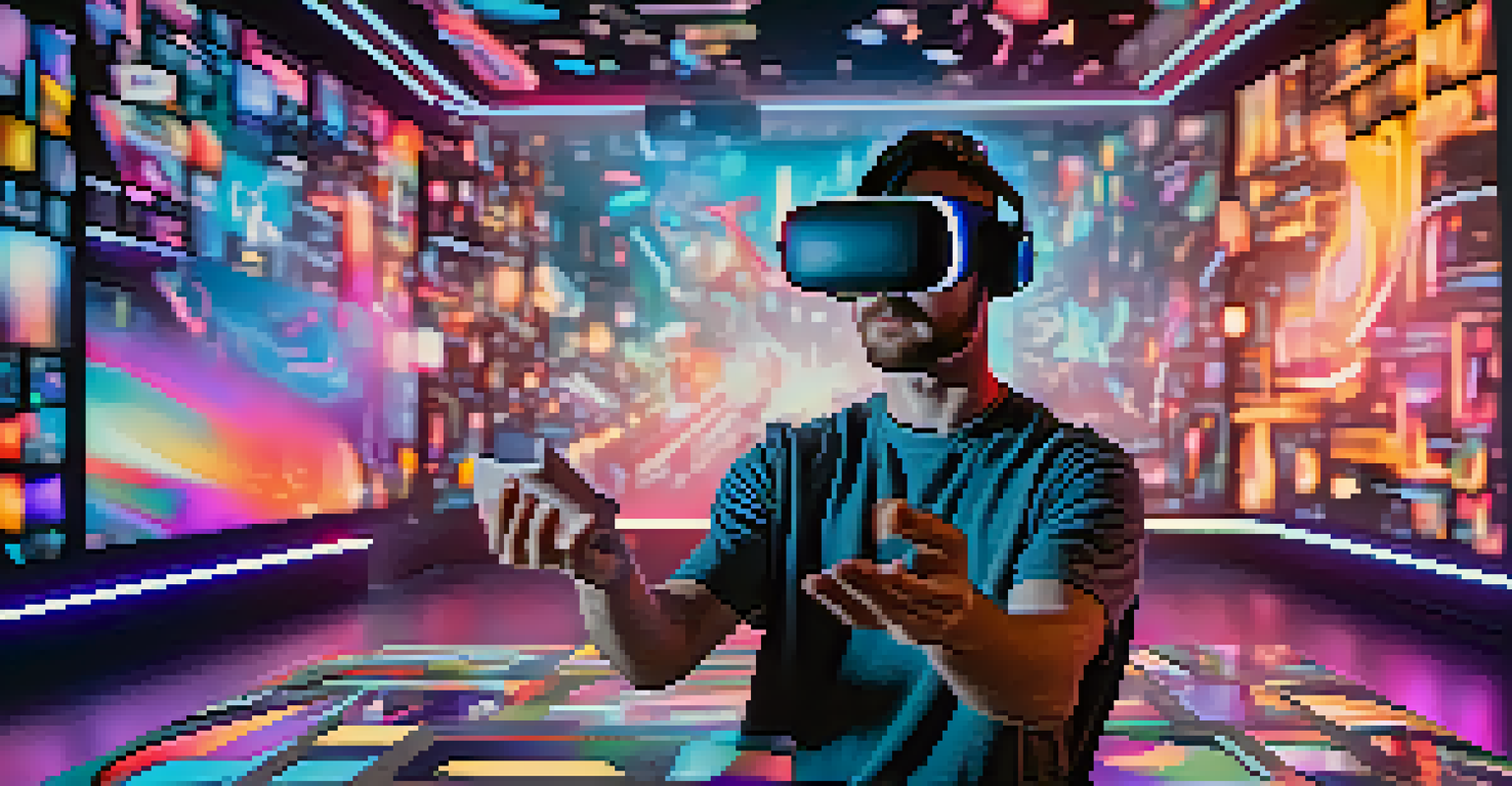Digital Painting Software: Tools for the Modern Artist

Understanding Digital Painting and Its Benefits
Digital painting is a technique that allows artists to create artwork using digital tools instead of traditional mediums. This innovative approach offers numerous advantages, including the ability to easily correct mistakes and experiment with colors without the fear of wasting materials. Additionally, the digital canvas can be saved and shared effortlessly, making it accessible to a wider audience.
Digital painting is not just a new way to create; it's a new way to think about art.
For artists, this means they can work faster and with greater flexibility. Imagine being able to paint a beautiful landscape and, if it doesn't turn out as expected, simply undoing it with a click. This instant feedback encourages creativity and exploration, helping artists push their boundaries.
Moreover, digital painting software often comes with a variety of brushes, textures, and effects that can replicate traditional styles while offering unique digital enhancements. This opens a world of possibilities, allowing artists to develop their distinctive style while also experimenting with new techniques.
Popular Digital Painting Software Options
There are several digital painting software options available, each catering to different needs and skill levels. For instance, Adobe Photoshop is a well-known choice among professionals due to its extensive features and versatility. It allows for complex layering, blending modes, and a broad array of brushes, making it a favorite for many artists.

Another popular option is Corel Painter, which is specifically designed to simulate traditional painting techniques. With its vast selection of brushes and customizable settings, artists can create stunning, lifelike artwork that feels authentic and organic.
Benefits of Digital Painting
Digital painting allows for easy corrections, experimentation with colors, and faster workflow, enhancing creativity.
For those seeking a more budget-friendly alternative, Krita is an open-source software that has gained immense popularity. It offers a robust set of features, including various brush engines and a user-friendly interface, making it ideal for both beginners and experienced artists.
Choosing the Right Software for Your Needs
Selecting the right digital painting software can feel overwhelming given the numerous options available. Start by considering your artistic goals—are you looking to create detailed illustrations, concept art, or simply explore your creativity? Understanding your purpose can help narrow down your choices.
The beauty of digital art is that you can create a masterpiece without the mess of traditional materials.
Additionally, think about your budget and whether you prefer a one-time purchase or a subscription model. Some software, like Adobe Creative Cloud, operates on a subscription basis, which can be more cost-effective for those who want regular updates and new features.
Lastly, take advantage of free trials offered by many software providers. Testing out a few different programs can help you find the one that feels right for you, allowing you to explore their unique features without committing financially.
Essential Features to Look For in Software
When evaluating digital painting software, there are several key features to keep in mind. A customizable brush engine is crucial, as it allows artists to replicate their favorite traditional techniques or create unique brushes tailored to their style. This flexibility can significantly enhance the painting experience.
Another important feature is the layering system. Layers enable artists to work on different elements of their artwork separately, making it easier to manage complex compositions and adjustments. This non-destructive workflow can save time and reduce frustration when refining a piece.
Choosing the Right Software
Selecting the best digital painting software depends on your artistic goals, budget, and the availability of free trials.
Lastly, consider the software's compatibility with hardware such as graphics tablets. A seamless integration with your devices can greatly improve your efficiency and overall experience, so check for compatibility before making a purchase.
Tips for Getting Started with Digital Painting
If you're new to digital painting, it can be helpful to start with tutorials available online. Many platforms offer step-by-step guides that can help you understand the basics of your chosen software. These resources are invaluable for building foundational skills and gaining confidence in your abilities.
Practice is key in developing your digital painting skills. Set aside dedicated time each week to experiment with different techniques, brushes, and styles. Don't be afraid to make mistakes—each one is an opportunity to learn and grow as an artist.
Lastly, engage with the digital art community. Join forums, social media groups, or local meetups to connect with other artists. Sharing your work and receiving constructive feedback can help you improve and stay motivated on your artistic journey.
The Role of Hardware in Digital Painting
While software plays a critical role in digital painting, hardware is equally important. A graphics tablet is often recommended for a more natural drawing experience, as it allows for better precision and control compared to a standard mouse. Many artists find that using a stylus with pressure sensitivity enhances their ability to create dynamic brush strokes.
Additionally, your computer's specifications can impact software performance. Ensure your device has enough RAM and processing power to handle the software smoothly, especially when working on large files or complex projects. This will help avoid frustrating lag during your creative process.
Impact of Hardware on Art
Quality hardware, including a graphics tablet and high-resolution monitor, significantly improves the digital painting experience.
Finally, consider display quality. A high-resolution monitor with accurate color representation is essential for digital artists, as it allows you to see the true colors of your artwork. Investing in good hardware can significantly elevate your digital painting experience.
The Future of Digital Painting and Technology
As technology continues to advance, the future of digital painting looks incredibly promising. Innovations such as virtual reality (VR) and augmented reality (AR) are beginning to make their way into the art world, offering artists new ways to create and interact with their artwork. Imagine painting in a 3D space, allowing for a completely immersive experience.
Moreover, artificial intelligence (AI) is starting to influence digital art tools. Some software now incorporates AI features that can assist in color selection, composition, or even generating ideas, making the creative process more efficient and inspiring.

Ultimately, the integration of these technologies is likely to expand the boundaries of what artists can achieve. As digital painting continues to evolve, it will be exciting to see how artists adapt and explore new horizons in their creative practices.